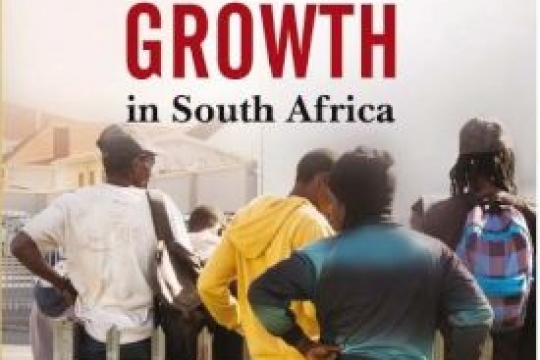South Africa’s official unemployment rate is over 25 percent. Amidst a virtually stagnant economy, it is unlikely that this will drop to the desired developing world target of below 10 percent in the foreseeable future.
How, then, can the country create more jobs, without any significant GDP growth on the horizon?
This is the central question of a new book Towards employment-intensive growth in South Africa, released by the University of Cape Town’s publishing house UCT Press in October.
One of the answers, argues the title’s editor, economics professor Anthony Black, is to redirect policy support away from energy-intensive industries which currently generate little direct employment. Rather, policy should enable labour-intensive sectors such as agriculture, certain kinds of manufacturing, and tourism.
South Africa faces structural unemployment problems dating back decades, explains Black. Owing to the country’s mineral wealth, the mineral-energy complex has become the economic engine room of the region. Energy-intensive mining and downstream industries have historically also thrived on the basis of significant subsidies, including cut-rate electricity deals offered by the state utility Eskom.
But a policy that is friendly towards heavy industry, together with the skills and education shortage inherent in South Africa, have distorted the country’s ‘revealed comparative advantage’ in favour of capital- and energy-intensive heavy industry. It isn’t easy to change this sort of policy landscape. For instance, longterm preferential electricity contracts with big industry aren’t easily unravelled, says Black, and there is no quick fix to the skills deficit.
‘We do need to change the current growth path, and this book flies a kite for some of the ways that we could do that,’ argues the editor.
The authors, 25 in all, analyse existing structural problems and discuss various approaches which policymakers might consider in order to create an economy that can absorb more labour per unit of GDP growth.
‘We consider the opportunities in wage subsidies,’ says Black. ‘We compare youth employment policies around the world, we take a look at agriculture subsidies, how to boost the clothing industry, and the need to deal with education issues.’
One approach could be to invest heavily in agriculture and rural development.
‘Agriculture is a small sector,’ explains Black. ‘It only accounts for 3 percent of the GDP, and 10 percent of the country’s total employment. But a small amount of investment can generate many more jobs. These aren’t great jobs, but they can create better livelihoods in small-scale or even larger-scale commercial farming.’
Tweaking the tax system in favour of employment
Another approach would be to shift subsidies away from energy-intensive industries, such as aluminium smelting, steel-making, and other ‘beneficiation’ processes associated with minerals and mining.
Black also suggests the introduction of a universal wage subsidy for low income workers. This could be done by adjusting the existing tax system so that employers can ‘write off’ more of their labour costs as expenses against their revenue, thereby reducing their tax bill.
‘Companies currently investing in research and development, can write 150 percent of these costs off against tax. At the moment, an employer can write off 100 percent of labour costs against tax. Why not adjust that to 110 percent for low income workers?’ posits Black. ‘This kind of thing would be easy to administer.’
Wider sustainability benefits
The benefits of a shift away from a subsidised, energy-intensive economy, to one which addresses unemployment and poverty through this sort of fiscal mechanism, is that it may offset some of the ‘negative externalities’ associated with unemployment, such as crime.
Furthermore, an employment-intensive growth path would be ‘less carbon intensive than the current path’, argues Black, where tax incentives have supported capital- and energy-intensive development.
A shift away from these sorts of incentives would reduce the country’s greenhouse gas emissions, bringing them in line with its international obligations, and would help the economy absorb the shorter-term shocks associated with rapidly rising electricity costs.
‘This is the alternative for our economy. It is a question of gradually reorienting our investment. We still have mines, and we still have minerals in the ground, and we have an advantage there. But it’s a distorted advantage because of our policies and our low skills base.’
